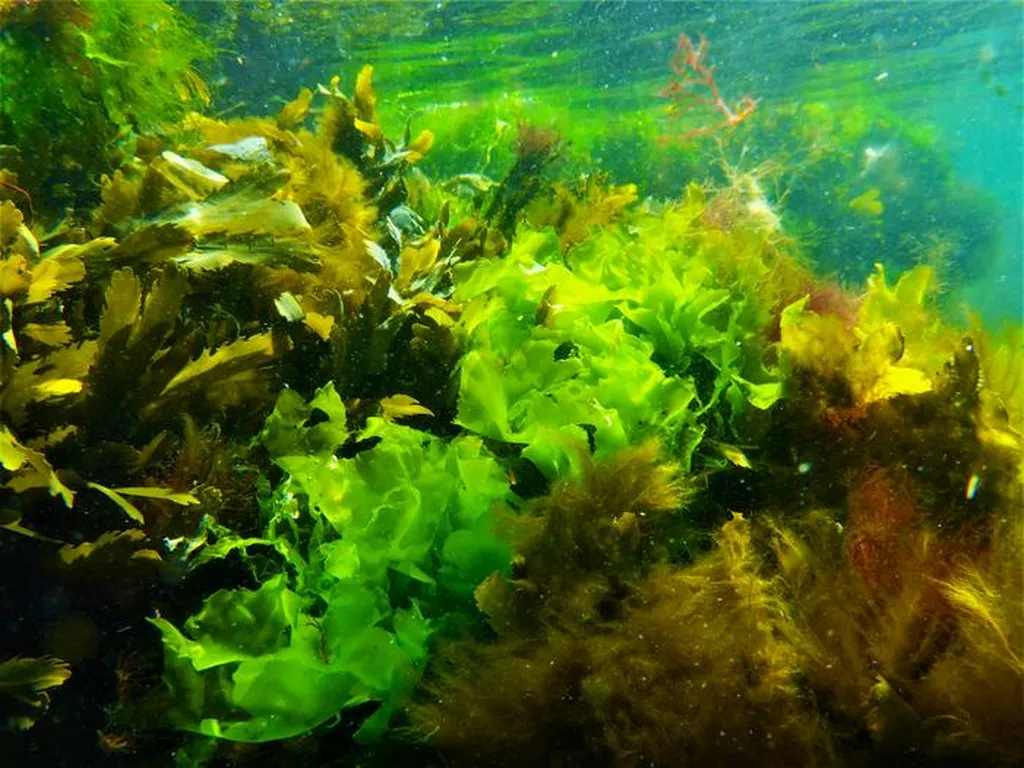In the vast and vibrant world of marine macroalgae, one genus stands out for its ecological significance and economic potential: *Ulva*, commonly known as sea lettuce. A recent review published in the journal *Plants* (known in Vietnamese as *Cây Cỏ*) sheds light on the diverse applications and challenges associated with this versatile algae, offering insights that could reshape the blue bioeconomy and energy sector.
Led by Thanh Thuy Duong from the Faculty of Agronomy at the University of Agriculture and Forestry, Hue University in Vietnam, the review underscores *Ulva*’s remarkable adaptability and biochemical diversity. These traits make it a valuable player in nutrient cycling, primary productivity, and habitat provision, while also positioning it as a key resource for various industrial applications.
“Ulva species are not just ecologically important; they are a goldmine of potential for food, feed, bioremediation, biofuel, pharmaceuticals, and biomaterials,” Duong explains. The review highlights the algae’s rapid growth and high adaptability, which support its role in environmental management and economic development.
One of the most compelling aspects of the research is its focus on molecular approaches to resolve taxonomic difficulties. Traditional methods of identifying *Ulva* species have been challenging due to their morphological variability. However, advances in molecular genetics are providing clearer insights into the biodiversity of this genus, paving the way for more targeted and effective utilization.
The review also delves into the biochemical profiles of *Ulva*, which determine its nutritional value and industrial potential. For instance, the algae’s ability to hyperaccumulate heavy metals, microplastics, and organic pollutants presents both opportunities and challenges. While this trait can be harnessed for bioremediation—cleaning up contaminated environments—it also raises safety concerns for food and feed uses. “Strict monitoring and quality control are essential to ensure the safe utilization of *Ulva* in various applications,” Duong emphasizes.
In the energy sector, *Ulva* shows promise as a feedstock for biofuel production. Its rapid growth and high biomass yield make it an attractive candidate for sustainable energy solutions. However, technical and economic barriers currently limit large-scale use. Overcoming these challenges will require innovative approaches and investments in research and development.
The review also considers the broader implications of *Ulva* research for environmental management and biodiversity assessment. By integrating molecular genetics, physiology, and applied studies, future research can support the sustainable utilization of *Ulva* and ensure its safe contributions to the blue bioeconomy.
As the world seeks sustainable solutions to environmental and economic challenges, *Ulva* emerges as a versatile and valuable resource. The insights provided by Duong and her colleagues offer a roadmap for harnessing the full potential of this remarkable algae, shaping the future of the energy sector and beyond. With continued research and innovation, *Ulva* could play a pivotal role in building a more sustainable and resilient world.

